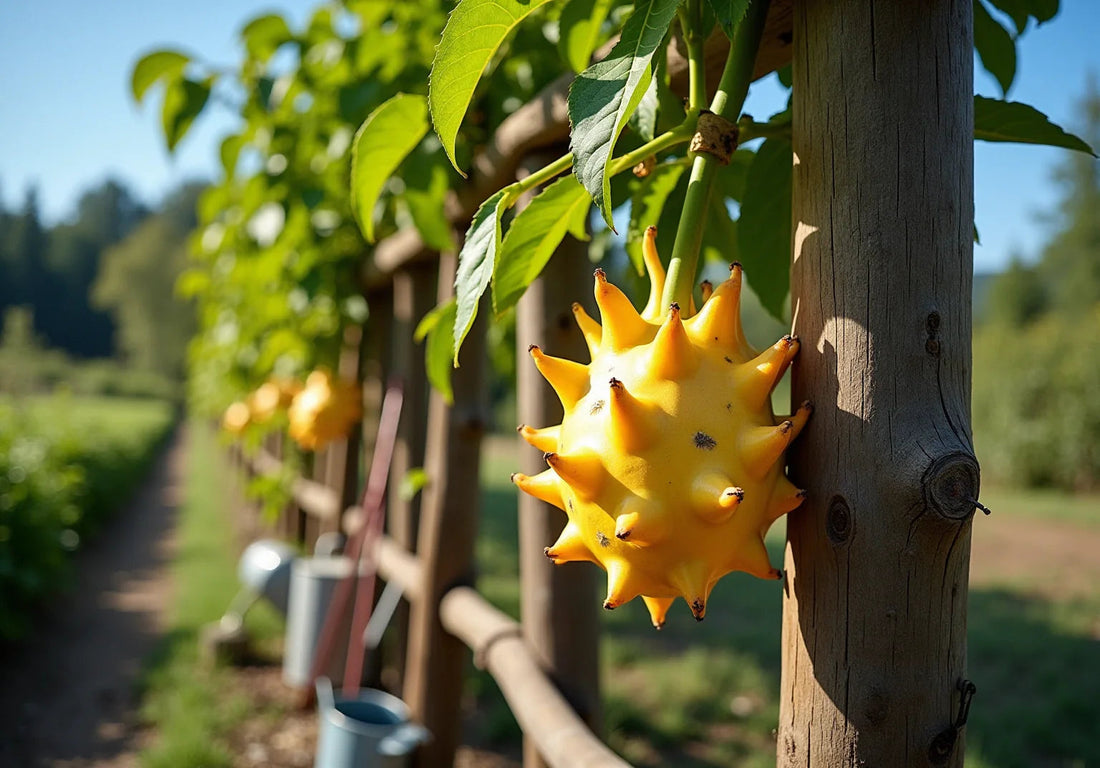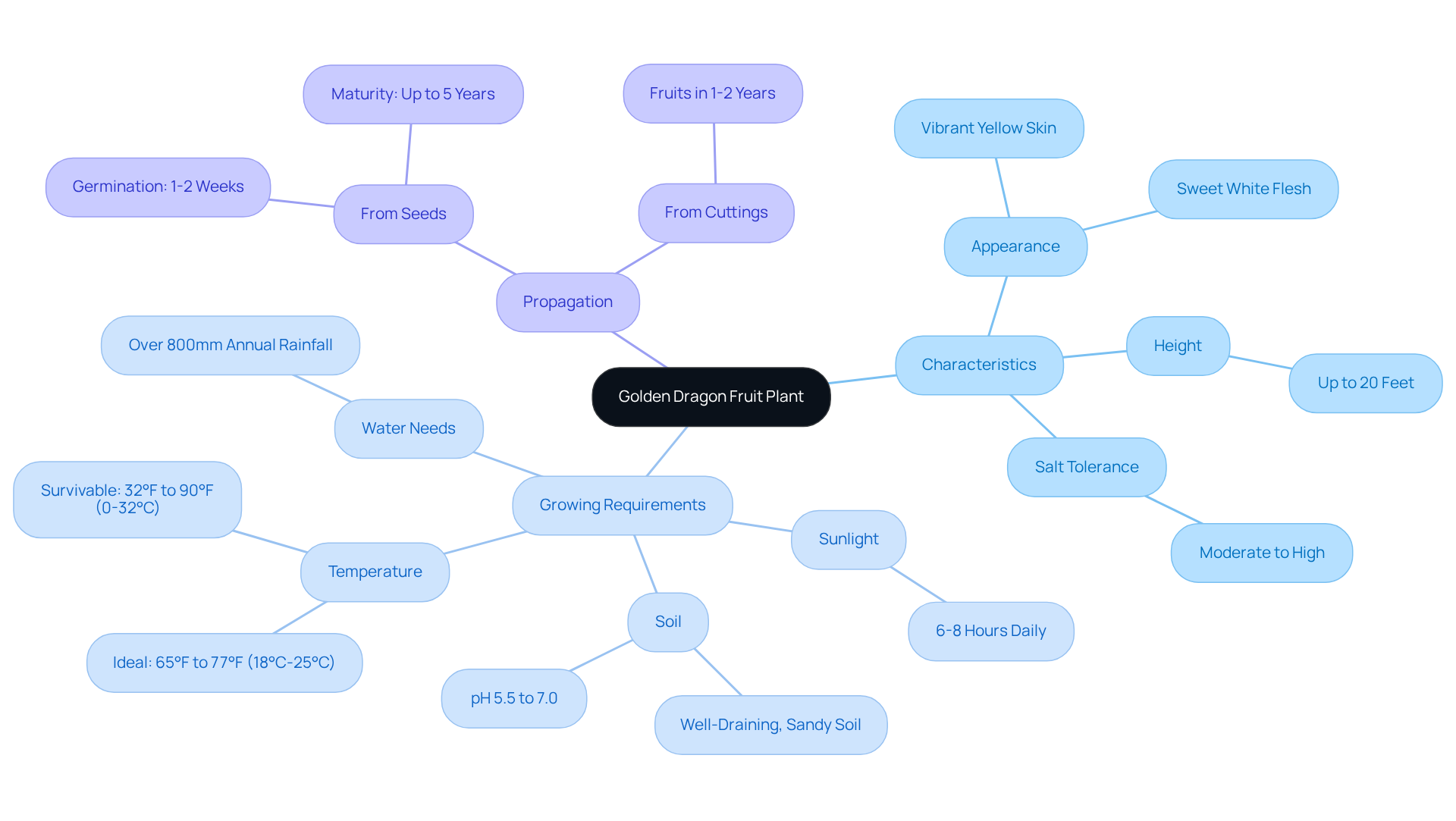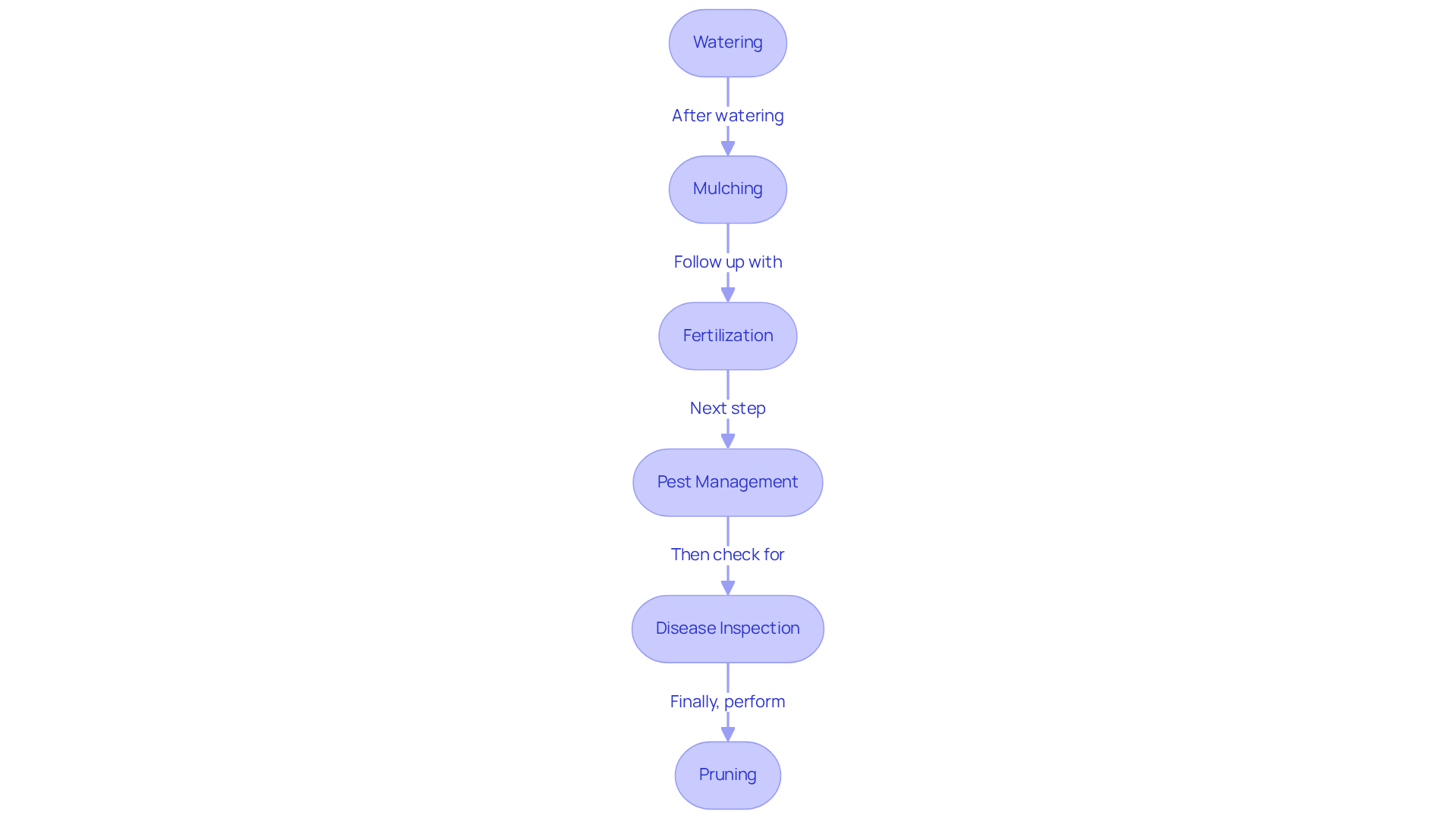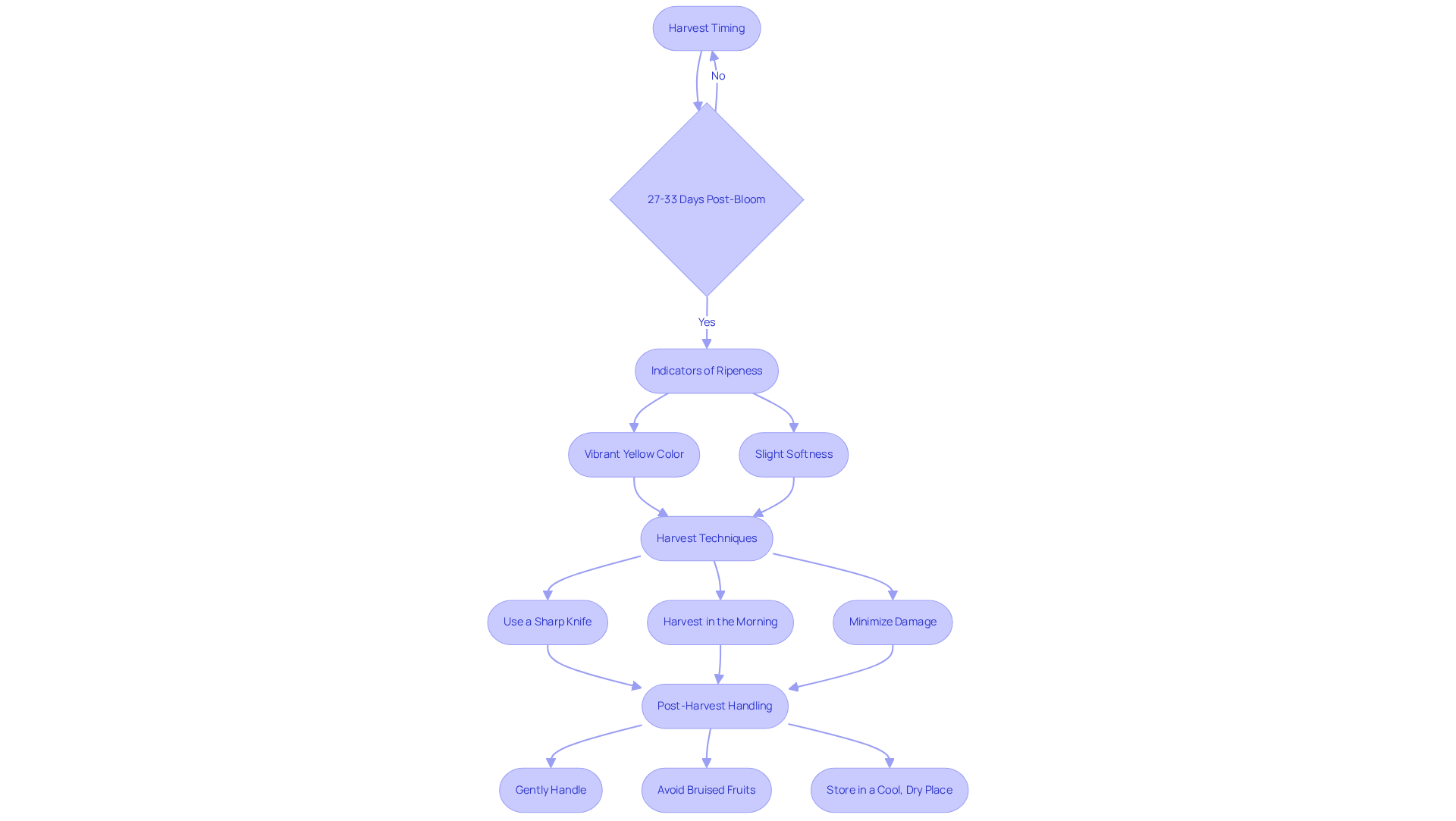
Mastering the Golden Dragon Fruit Plant: Essential Growing Tips
Share
The allure of the golden dragon fruit, characterized by its vibrant yellow skin and sweet, succulent flesh, captivates both seasoned gardeners and curious beginners alike. Successfully cultivating this unique tropical cactus requires an understanding of its specific growing requirements and the implementation of best practices that ensure a bountiful harvest.
Many aspiring gardeners may wonder: what are the essential strategies for mastering the art of growing this exotic fruit? This article explores the critical aspects of nurturing the golden dragon fruit plant, including:
- Soil preparation
- Watering techniques
- Pest management
- Optimal harvesting methods
By providing these insights, we empower readers to achieve thriving plants and delightful results.
Want to grow a Gragon Fruit in your garden?
Explore Dragon Fruit Trees for sale at Everglades Farm - shipped directly from Florida.

1. Understand the Golden Dragon Fruit: Characteristics and Growing Requirements
The golden dragon fruit plant, scientifically known as Hylocereus megalanthus, is a striking tropical cactus celebrated for its vibrant yellow skin and sweet, white flesh. Thriving in warm, humid climates, the golden dragon fruit plant requires full sun exposure for a minimum of 6-8 hours each day to flourish. It prefers well-draining, sandy soil with a pH level ranging from 5.5 to 7.0, which is crucial for optimal growth. The ideal temperature range for the Golden Fruit is between 65°F and 77°F (18°C-25°C), and it can endure temperature fluctuations between 32°F and 90°F (0-32°C). Understanding these specific requirements is vital for gardeners looking to successfully cultivate the golden dragon fruit plant.
In terms of growth, the golden dragon fruit plant can reach heights of up to 20 feet, making it essential to provide a sturdy support structure, such as a trellis, to accommodate its climbing nature. Additionally, the species demonstrates moderate to high salt tolerance, enabling it to flourish in various soil types. However, it reaches its maximum growth in well-drained, slightly acidic soils rich in organic matter. For optimal yield, the organism necessitates over 800mm of yearly precipitation. By following these cultivation tips and environmental preferences, including using a balanced fertilizer every 2-3 months during the growing season, gardeners can ensure that their golden dragon fruit plant remains healthy and productive.
It is also important to highlight that dragon species can flourish in USDA zones 9 through 11, making them appropriate for a range of gardening areas. Lastly, for those contemplating propagation, dragon fruit seeds usually sprout in approximately 1-2 weeks, while plants cultivated from seeds may require up to 5 years to yield.

2. Prepare Your Garden: Soil, Planting Techniques, and Optimal Conditions
To successfully grow the golden dragon fruit plant, begin by selecting a sunny location with excellent drainage. The ideal pH range for the golden dragon fruit plant is between 6 and 7, making it essential to test the soil and amend it as necessary. Enhancing the soil's fertility and drainage can be achieved by incorporating organic matter such as compost or well-decomposed manure. A recommended soil mix includes equal parts cactus potting soil and perlite, which promotes aeration and prevents compaction.
When planting, dig a hole that is twice the size of the root ball, ensuring the specimen is set at the same depth as it was in its container. After planting, thoroughly irrigate the vegetation, providing approximately an inch of water weekly. To retain moisture and inhibit weeds, apply a 2 to 3-inch layer of mulch, keeping it a few inches away from the stem to prevent decay. Additionally, organize the cultivation area of the golden dragon fruit plant to shield it from strong winds, which can damage the delicate stems of this species.
If cultivating multiple dragon fruit specimens, ensure they are spaced 6 to 8 feet apart to allow for adequate growth. To maintain soil health, apply a balanced NPK fertilizer (10-10-10) every 6 to 8 weeks during the active growth period, and test the soil pH every six months or whenever the plants exhibit signs of stress.
3. Maintain Your Plants: Care, Watering, and Pest Management Strategies
Nurturing your golden dragon fruit plant cultivations requires a strategic approach to watering, fertilization, and pest control.
- Water thoroughly but infrequently, allowing the soil to dry out between irrigations to prevent root rot; typically, this means watering every three weeks during the growing season.
- Additionally, applying a 5-8 cm (2-3 inches) thick layer of mulch around the base of the Dragon species is essential for retaining soil moisture and regulating temperature.
- A balanced fertilizer should be administered every 4-6 weeks to encourage robust growth.
Monitoring for pests such as aphids and mealybugs is crucial, as these can be effectively managed using organic solutions like neem oil or insecticidal soap.
- Regular inspections for signs of disease are vital, and maintaining good sanitation by removing any dead or infected material will help prevent issues.
- Pruning is also important; consistently removing weak or damaged stems promotes healthy growth and enhances yield.
During the dormant winter months, it's advisable to reduce watering to once a month to align with the plant's seasonal needs. By following these methods, you can ensure that your golden dragon fruit plant thrives and produces delicious harvests.

4. Harvest Effectively: Timing and Techniques for Optimal Fruit Quality
Harvesting the golden dragon fruit plant requires precise timing and careful technique to ensure optimal quality. The fruit typically matures 27 to 33 days after blooming, with the ideal harvesting period occurring from mid-summer to early autumn. Indicators of ripeness include a vibrant yellow coloration and a slight softness when gently squeezed. For the best flavor, it is advisable to harvest four days after the color change.
To gather the fruit from the golden dragon fruit plant, use a sharp knife to sever it from the stem while ensuring minimal damage to the golden dragon fruit plant. It is recommended to harvest in the morning on a dry day to reduce moisture exposure, which can adversely affect the quality of the fruit. After harvesting, handle the fruit gently to prevent bruising and avoid purchasing any that are leaking juice, as this suggests potential damage. Store the fruit in a cool, dry location to maintain freshness.
As noted by Andrew Carberry, a Food Systems and Gardening Expert, employing these proper harvesting techniques not only preserves the fruit's flavor but also enhances the overall gardening experience.

Conclusion
Mastering the cultivation of the golden dragon fruit plant requires an understanding of its unique characteristics and specific growing requirements. By providing the right conditions—ample sunlight, well-draining soil, and appropriate temperature ranges—gardeners can create an environment that fosters healthy growth and fruitful yields. This tropical cactus not only boasts a visually striking appearance but also produces delicious and nutritious fruit when cared for properly.
Key strategies for successful cultivation include:
- Preparing the garden with the right soil mix
- Maintaining proper watering and fertilization schedules
- Implementing effective pest management techniques
Regular inspections, pruning, and mindful harvesting practices further enhance both the quality of the fruit and the overall gardening experience. By adhering to these best practices, cultivators can anticipate a bountiful harvest of golden dragon fruit while ensuring the longevity of their plants.
Ultimately, embracing the art of growing the golden dragon fruit plant transcends mere guideline adherence; it involves engaging with nature and experiencing the joy of nurturing a unique and rewarding species. Whether for personal enjoyment or commercial endeavors, these tips serve as a foundational resource for successful cultivation, encouraging all gardeners to explore the vibrant world of the golden dragon fruit.
Cultivate Your Own Tropical Paradise Today!
Join Everglades Farm and start growing golden dragon fruit for a bountiful harvest and a taste of the tropics.
🛒 Explore Dragon Fruit Trees collection
Read:
Frequently Asked Questions
What is the scientific name of the golden dragon fruit plant?
The scientific name of the golden dragon fruit plant is Hylocereus megalanthus.
What are the key characteristics of the golden dragon fruit?
The golden dragon fruit is known for its vibrant yellow skin and sweet, white flesh.
What are the sunlight requirements for growing golden dragon fruit?
The golden dragon fruit plant requires full sun exposure for a minimum of 6-8 hours each day.
What type of soil is best for cultivating golden dragon fruit?
It prefers well-draining, sandy soil with a pH level ranging from 5.5 to 7.0.
What is the ideal temperature range for the golden dragon fruit plant?
The ideal temperature range is between 65°F and 77°F (18°C-25°C), although it can endure temperatures between 32°F and 90°F (0-32°C).
How tall can the golden dragon fruit plant grow?
The golden dragon fruit plant can reach heights of up to 20 feet.
What type of support does the golden dragon fruit plant need?
It requires a sturdy support structure, such as a trellis, to accommodate its climbing nature.
How tolerant is the golden dragon fruit plant to salt?
The species demonstrates moderate to high salt tolerance, allowing it to flourish in various soil types.
How much annual precipitation does the golden dragon fruit plant need for optimal yield?
The plant requires over 800mm of yearly precipitation for optimal yield.
What fertilizer schedule is recommended for the golden dragon fruit plant?
It is recommended to use a balanced fertilizer every 2-3 months during the growing season.
In which USDA zones can the golden dragon fruit thrive?
The golden dragon fruit can flourish in USDA zones 9 through 11.
How long does it take for dragon fruit seeds to sprout?
Dragon fruit seeds usually sprout in approximately 1-2 weeks.
How long may it take for plants grown from seeds to yield fruit?
Plants cultivated from seeds may require up to 5 years to yield fruit.

